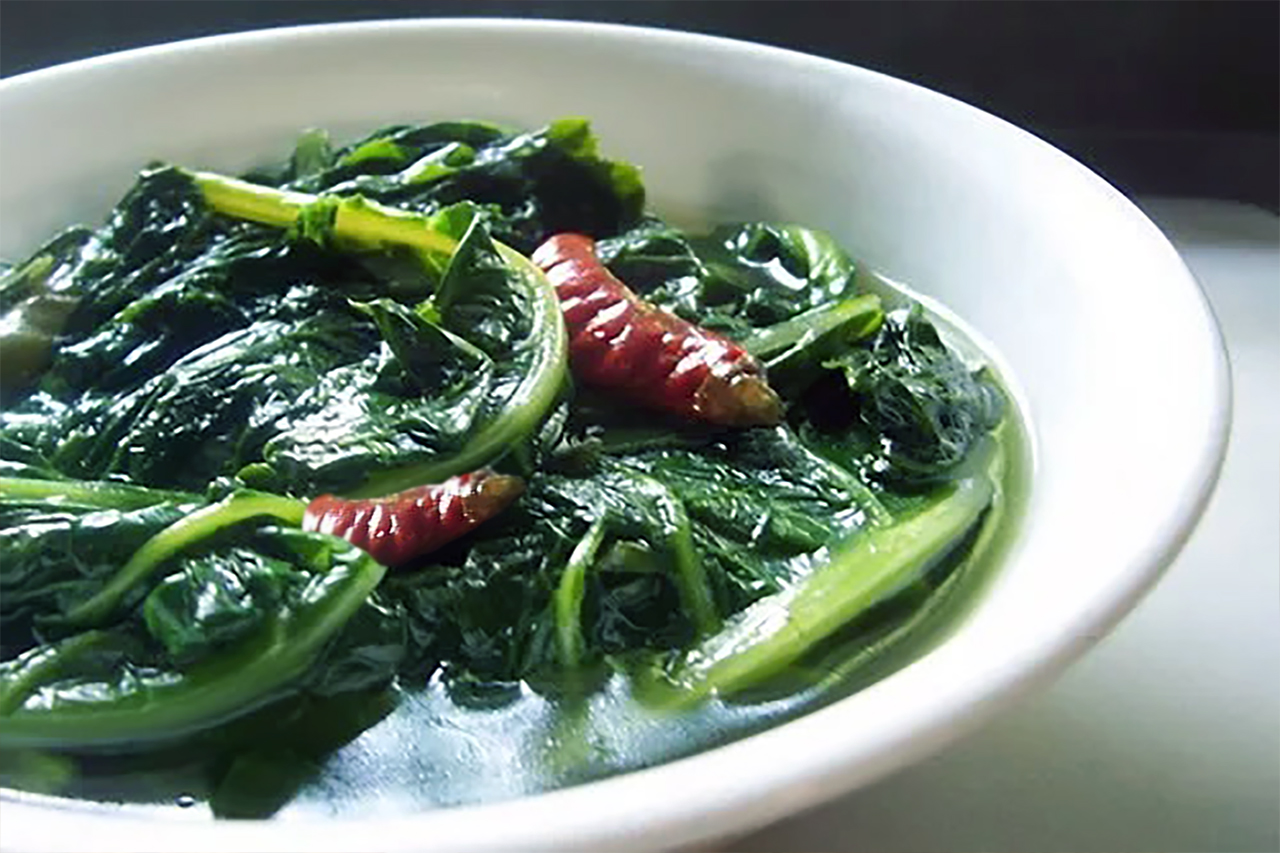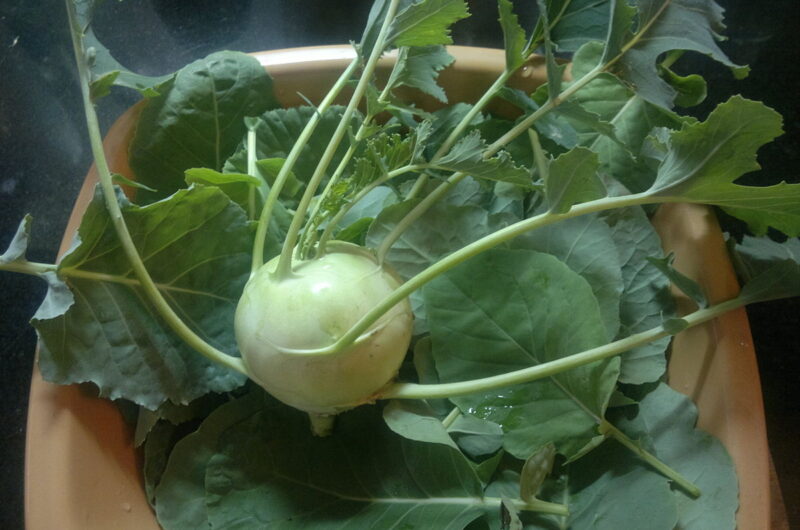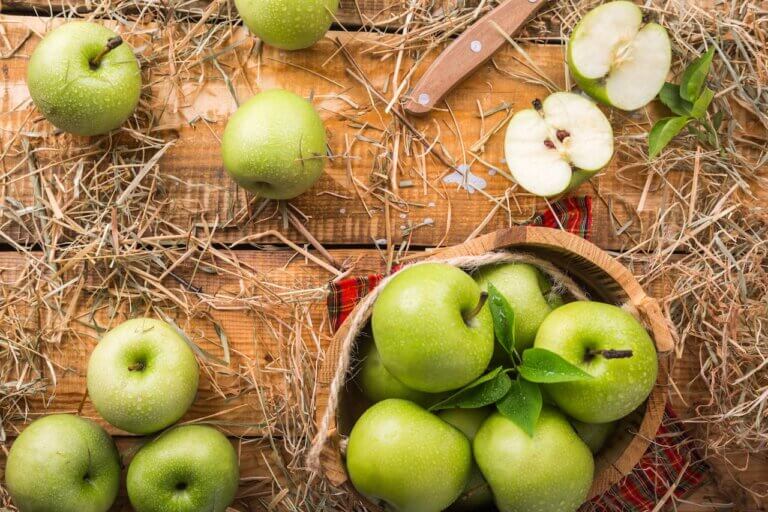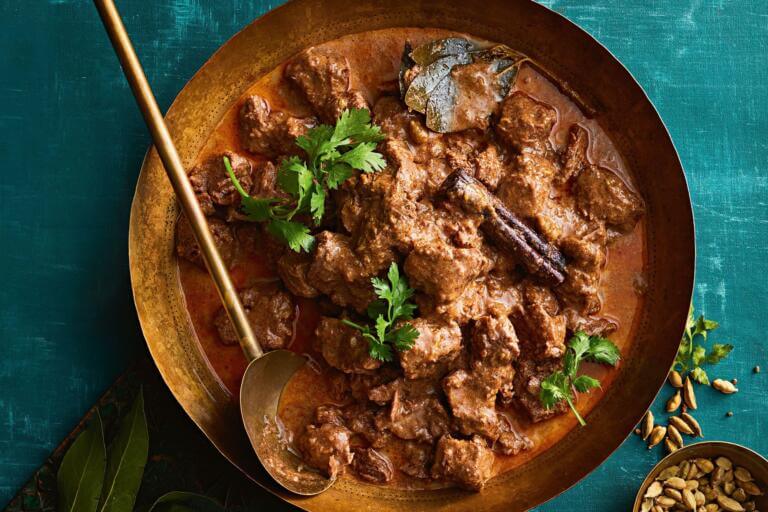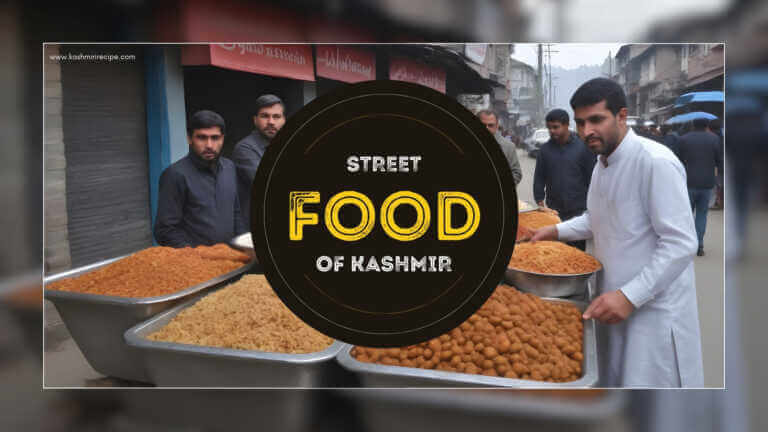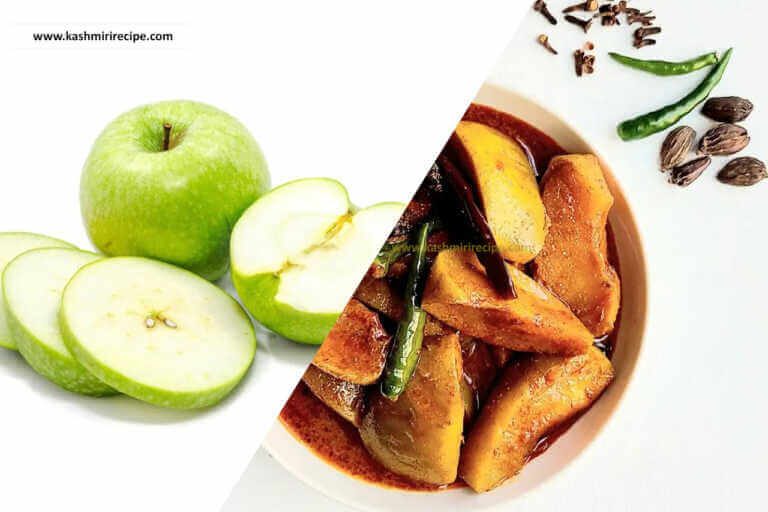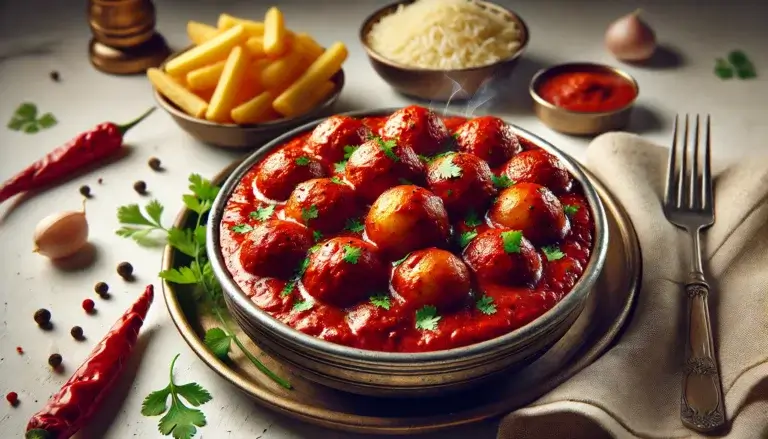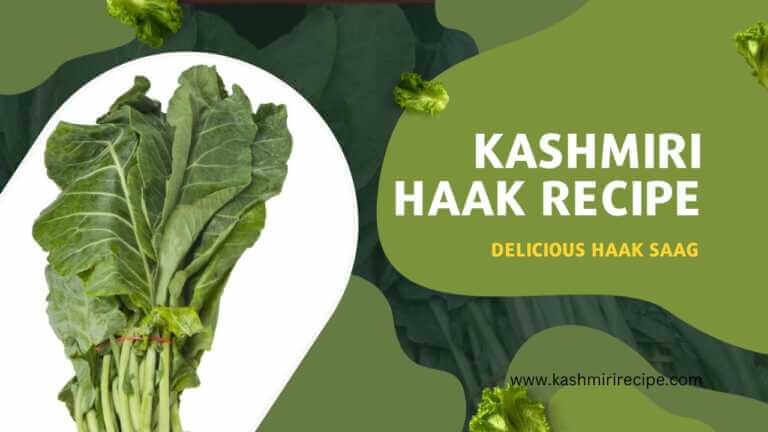Kashmiri Monj Haakh Recipe
Kashmiri Monj Haakh, or Kohlrabi Greens, is a delicious and nutritious winter vegetable that is popular in the Kashmir region of India. It is made with kohlrabi, which is a root vegetable that resembles a turnip, and the leafy greens of the kohlrabi plant. Monj Haakh is typically seasoned with asafoetida, ginger, and Kashmiri chili powder, and can be served as a side dish or as a main course.
Kohlrabi is a good source of vitamins C and K, as well as fiber. It is also low in calories and carbohydrates. The leafy greens of the kohlrabi plant are also a good source of nutrients, including vitamins A and C, calcium, and iron.
Kashmiri Monj Haakh is a very versatile dish. It can be served as a side dish with rice, naan, or roti. It can also be served as a main course, especially when paired with yogurt or raita. Monj Haakh is also a popular ingredient in Kashmiri wazwan, which is a traditional Kashmiri feast.
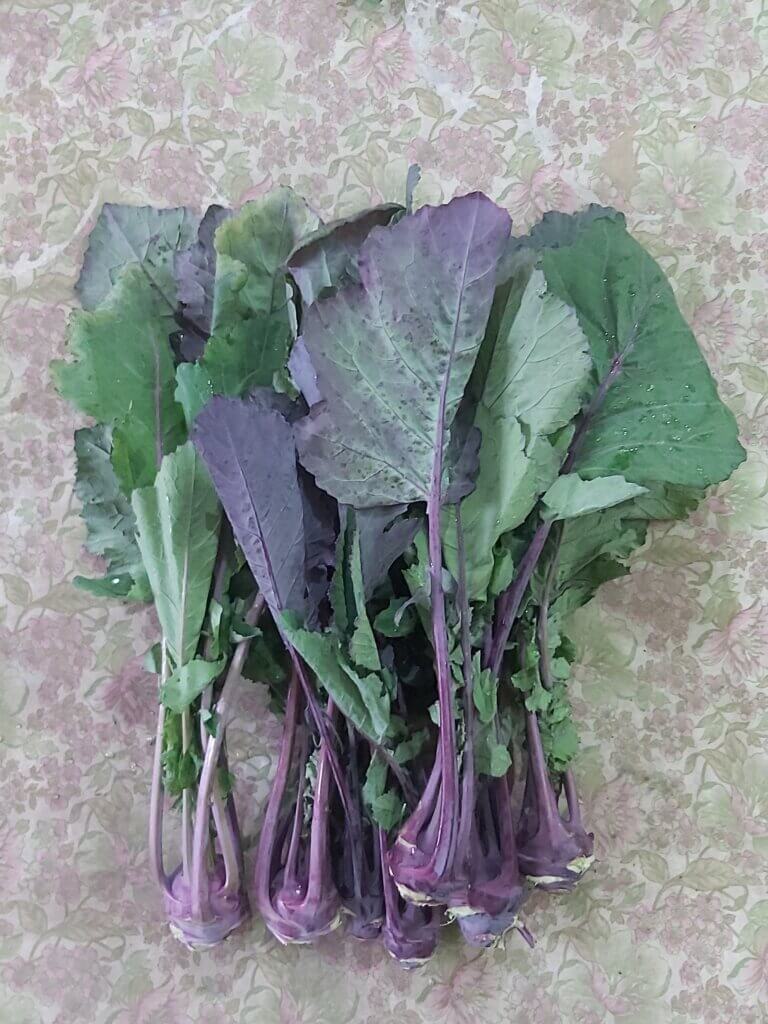
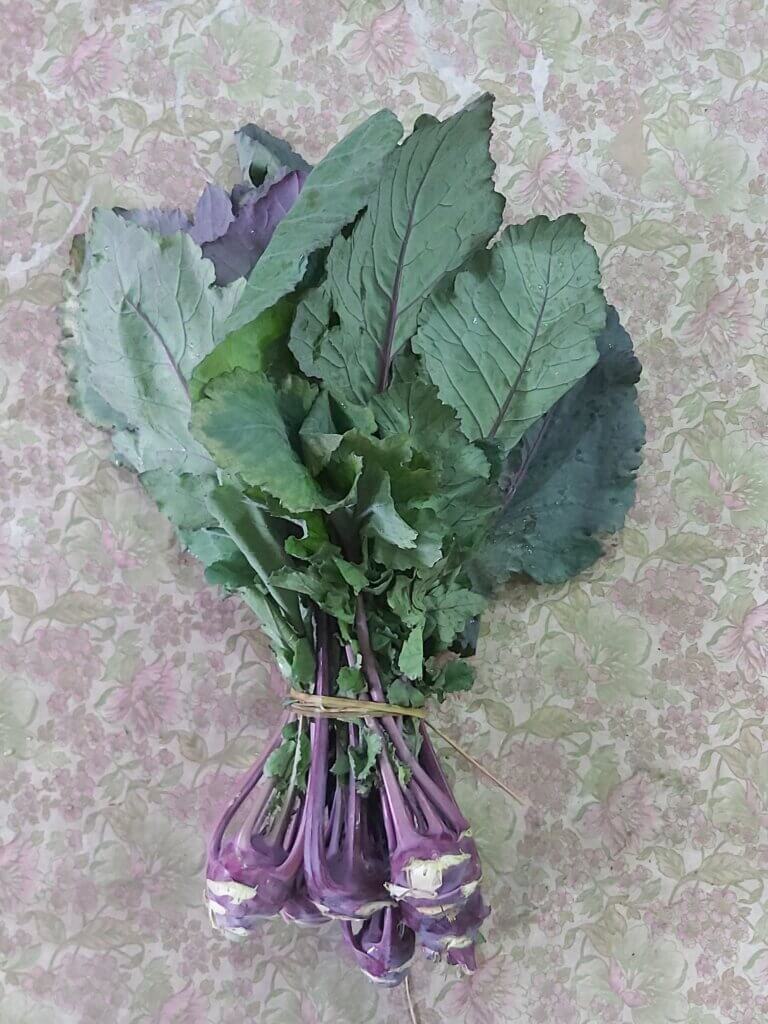
Kashmiri Monj Haakh Recipe
Course: VegetarianCuisine: KashmiriDifficulty: Easy5
servings20
minutes30
minutes300
kcal1
hour10
minutesThe second most popular vegetable in Kashmiri cuisine after Lotus Stem is Knol Khol, also referred to as Ganth Gobhi. Traditionally flavored with asafoetida, Monj Haak is a well-known Kashmiri vegetarian recipe made with knol khol and greens.
With only a few ingredients, this recipe comes together quickly. The Kashmiri Monj Haakh curry's soupy consistency makes it a perfect side dish to go with Kashmiri Chaman Qaliya or Kashmiri Rogan Josh for lunch.
Ingredients
1/2 kg Monj Haakh (Knol Khol / Ganth Gobi / Kadam)
2 Stalks Knol khol Leaves (Ganth Gobi leaves)
2 pinch Asafoetida (hing)
2 Dry Red Chillies
1 pinch of Baking soda
1 teaspoon Kashmiri masala powder
2-3 tablespoons Mustard oil
Salt, as per the taste
Directions
- Clean and slice the ½ (half) kg leaves into halves
- Peel and wash the Knol Khol lumps
- Slice the lumps thinly using a knife
- Heat 1½ large spoons of the Sarso ka tel (mustard oil) in the pressure cooker
- Sauté ½ (half) teaspoon Asafoetida (Heeng)
- Add the kohlrabi leaves and the thin slices of lump to the oil
- On low heat, stir and shallow fry for five to ten minutes
- Add 1 spoonful of Namak salt and stir for an additional five to ten minutes
- Pour. ½ (Half) a glass of water in the cooker
- Close the lid and cook for 6–7 whistles on a high flame
- Remove it from the steam immediately. Remove the pressure and open the lid right away.
- To enhance the flavor, add 2-3 Whole green chilies (Hari Mirch) or Whole red chilies (Lal Mirch) and 1½ teaspoons of Var masala (Tikki Masala) powder
Notes
- 1. Mustard oil, Asafoetida, Var masala, Whole green chilies, and Whole red chilies are the important ingredients. Without them, the authentic Kashmiri taste wouldn't be there.
- 2. For a richer flavor, you can add a tablespoon of ghee or butter to the pot along with the mustard oil.
- 3. If you don't have Kashmiri collard greens, you can use any other type of leafy green vegetables, such as spinach, kale, or mustard greens.
- 4. If you like a spicier dish, you can add more Kashmiri red chili powder or a few green chilies to the pot.
- 5. Monj Haakh can also be made with non-vegetarian ingredients, such as chicken or lamb. To do this, simply add the meat to the pot along with the kohlrabi and greens.
People also ask
-
What are the nutritional benefits of Monj Haakh?
Kohlrabi is rich in vitamins C and K, low in calories, and high in fiber. The dish also includes nutrients from kohlrabi greens, such as vitamins A and C, calcium, and iron.
-
How can Monj Haakh be served?
Monj Haakh can be served as a side dish with rice, naan, or roti. It can also be a main course, especially when paired with yogurt or raita. It’s a versatile dish that complements various meals.
-
Is Monj Haakh a part of Kashmiri cuisine traditions?
Yes, Monj Haakh is a significant dish in Kashmiri cuisine and is often featured in traditional feasts known as wazwan. It’s celebrated for its cultural importance and culinary excellence.
-
What gives Monj Haakh its unique flavor?
Monj Haakh gets its unique flavor from a blend of spices, including asafoetida, ginger, and Kashmiri chili powder, which infuse the dish with a delightful taste and aroma.
-
What are the key ingredients?
Mustard oil, Asafoetida, Var masala, Whole green chilies, and Whole red chilies are key ingredients.
-
Can you customize Monj Haakh to your taste?
Yes, you can adjust the spice level and pair it with your favorite sides.
Important Search Terms:
Authentic monj haak recipe, Monj haak in English, Kashmiri knol khol recipe, Noolkol vegetable recipes, Traditional kohlrabi recipes, Monj haak in hindi

